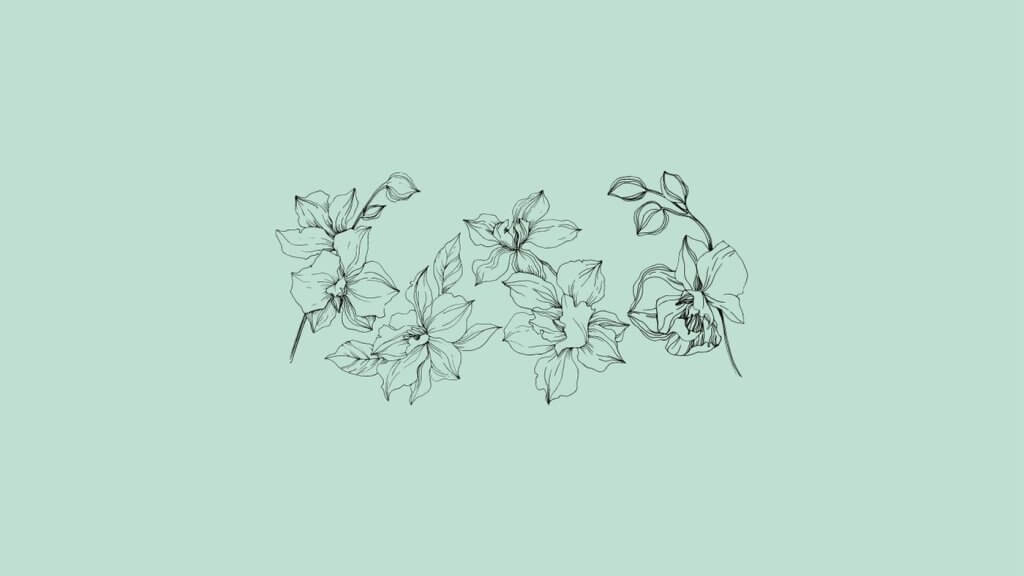Bauhinia variegata refers to the ever-popular edible orchid tree. This flowering plant belongs to the legume family but earns its reputation more readily for its orchid-like flowers. The flowers and bulbs are used in traditional Indian and Nepalese recipes.
The small, evergreen tree is a beautiful specimen of a plant with flowers reminiscent of butterflies.
But there’s much more to this fast-growing, ornamental tree than its looks.
Bauhinia Variegata: Common Names & Plant Profile
You’ve probably heard of the Bauhinia variegata by one of its more common names, which include:
What Are You Foraging For Right Now?
We're thrilled to hear your ideas. What would you like to submit today? Feel free to share your thoughts and experiences with us.
- Camel’s foot tree
- Mountain ebony
- Ebony wood
- Purple orchid tree
- Poor man’s orchid
- Kuchnar
- Bauhinia purpurea
The Bauhinia variegata is a small-evergreen plant that lies between a deciduous tree and shrub. It has a spreading canopy of light green leaves.
The leaves resemble butterfly wings. Now you know why it’s also called the butterfly tree.
Even though the common name for the Bauhinia variegata is an orchid tree, it doesn’t belong to the Orchidaceae family. Instead, the Bauhinia genus refers to a large body of flowering plants in the larger Fabaceae family, the tribe Bauhinieae and the subfamily Cercidoideae.
There’s a vast number of species of the Bauhinia genus, including the Bauhinia congesta, known by its common name anacacho orchid tree. The Bauhinia x blakeana is another popular orchid tree and the floral emblem of Hong Kong. Again that’s why it’s called the Hong Kong orchid tree.
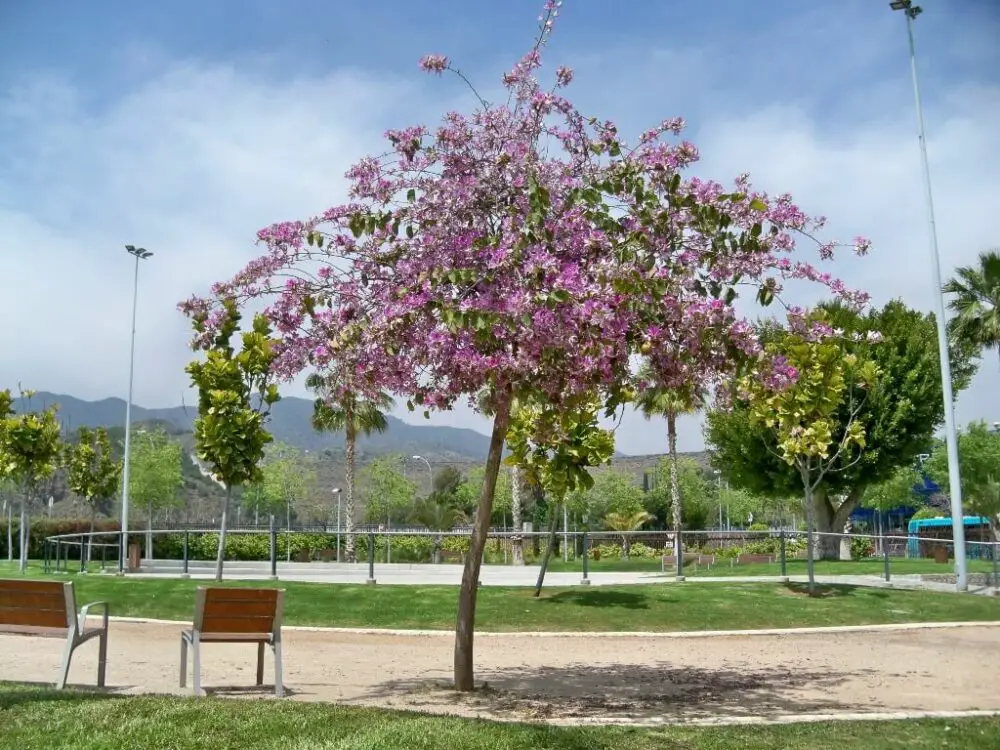
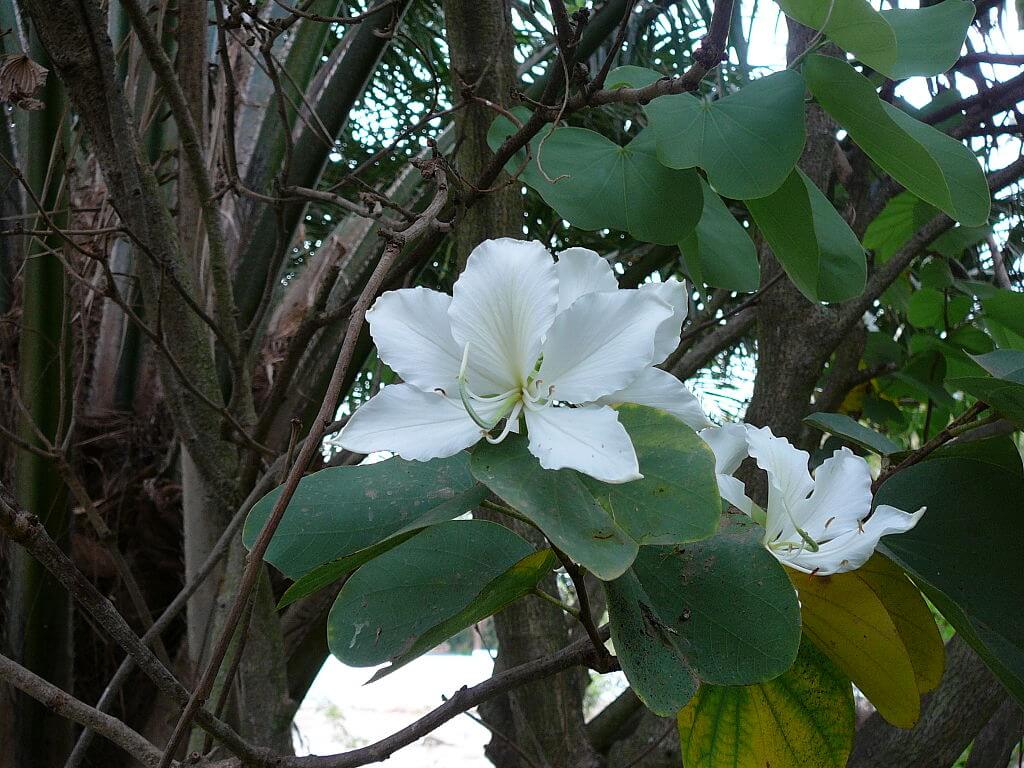
Where is it Native?
Depending on the species of this larger Fabaceae family, the Bauhinia genus is found planted globally.
The Bauhinia variegata is native to China as part of Southeast Asia, all the way to the Indian subcontinent.
Occupants of subtropical and tropical climates seem to love this ornamental tree. Not only do they love it for its pleasantly scented flowers, but it is a food source in Indian and Asian cuisine.
Where does it Grow?
The purple orchid tree is located in the gardens and parks of the Neotropics. It’s an attraction for pollinators and hummingbirds.
But sadly, in some areas, the orchid tree has become naturalized and is classed as an invasive species. It’s an invasive plant in Australia, the Bahamas, Cuba, New Caledonia, and Florida.
How to Identify the Orchid Tree?
This edible wildflower shines during its late winter to early spring bloom time, displaying bright pink, purple and white orchid-like flowers.
The conspicuous bright pink or white flowers stand out above all other aspects of the purple orchid tree. Usually, the flowers are 8-12 centimeters in diameter (3.1-4.7in), with five petals.
Moreover, the purple orchid tree is small to medium in stature, usually growing to about 10 to 12 meters (33-39ft). The leaves are about 10-20 centimeters (3.9-7.9in) in length.
The leaves are easily identified as:
- Rounded
- Long and broad
- Bilobed at the base and apex
- Obcordate shaped
Look out for its pollens. They are elongated, usually at about 75 microns long, and a perfect source for pollinators.
This small tree stands out from its surrounding foliage as a showy plant. There’s no wonder hummingbirds and other pollinators can’t get enough.

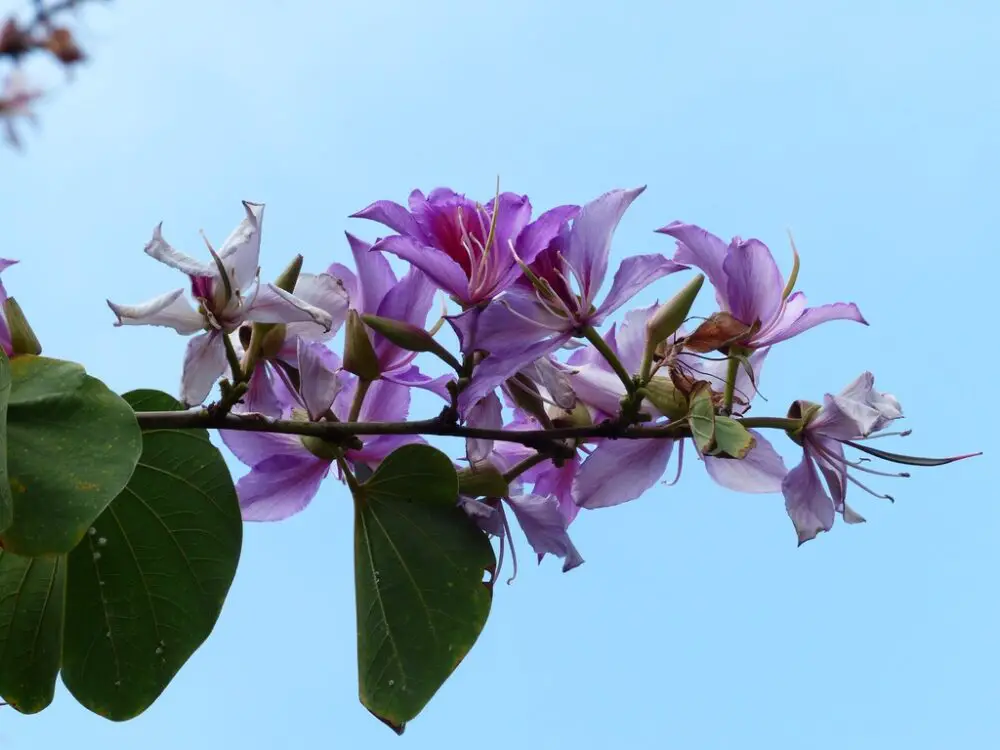
What is Bauhinia Variegata Used for?
The flowers of the orchid tree are often prepared as part of a traditional kachnar curry. The kachnar buds are combined with native spices, onions, and yogurt to make traditional dishes.
The purple orchid tree is known in Nepal as Koirala. Its flower, Koirala Ko Phool in the Nepali language, is used to make the traditional Nepalese style acaar.
The purple orchid tree has other uses as well, including medicinal applications. For example, the bark is often used in traditional medicine, animal food, poison antidote, and fuel.
Are Bauhinia Variegata Flowers Edible?
Many people don’t realize the orchid tree is a nutritious and edible wildflower.
People in the Indian subcontinent often consume the edible buds from the blossom of what they call the kachnar tree. We know this tree as the Bauhinia variegata. This ingredient is widely used in subcontinent recipes.
This edible fruit is golden yellow and super sweet when ripe. It also has edible leaves and flowers that are used like sorrel. The flowers are also commonly used in salad and conserves.
Edible fruits of the Bauhinia genus aren’t just limited to B. variegata but also include Bauhinia x blakeana.
How to Cook Bauhinia Variegata?
When making achar in India (a typical pickle), the kachnar buds are often cooked in curries or as a stir-fried vegetable.
In Nepal, the aforementioned Nepalese style achar is cooked by boiling the flowers and the buds for quite some time and mixing with roughly mashed boiled potato, chopped green chilies, onions, fresh tomatoes, peas, spices, coriander leaves, and spices.
In a traditional method, Nepalese style achar is made by heating mustard oil and fenugreek seeds and then adding them to the mixture above, along with lemon or lime juice concentrate.
Traditionally, the achar is served instantly, an essential part of the meal at the Ghode Jatra festival.
I recommend the following achar recipes:
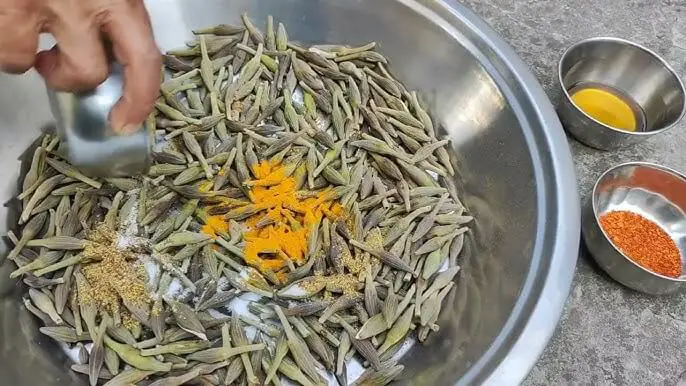
How do you Grow Bauhinia?
- Bauhinia variegata thrives best in either full sun or shade, so it’s not fussy.
- It prefers moist, well-draining soils. While it is drought tolerant once established, it will need protection from cold winds.
- It usually grows as a multi-stemmed shrub, but you can make it an attractive tree when it’s staked and pruned. As it flowers on old wood, prune it after flowering.
- This ornamental tree is generally considered pest and disease-free, but you must watch out for aphids.
Hopefully, you’ve learned enough about Bauhinia variegata to identify it, use it and add it to your plant’s database.
Getting into the great, wet outdoors in search of edible plants, herbs, fruits and fungi is one of Sarah’s favorite outdoor pursuits. She thinks there’s nothing better than combining her passion for hiking with the start of the foraging season. Sarah’s definitely not afraid of a little rain and dirt, it’s all part of the fun.

